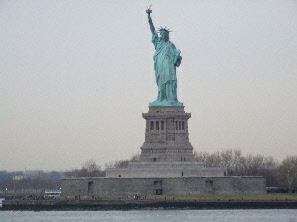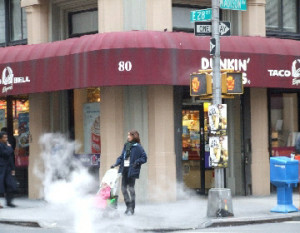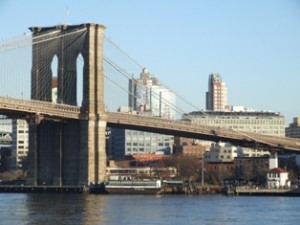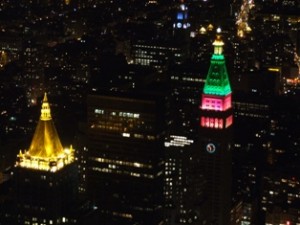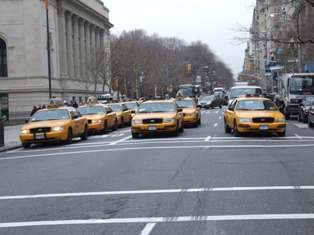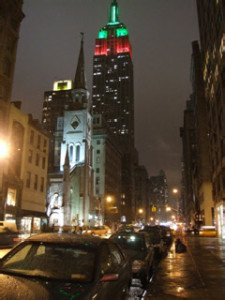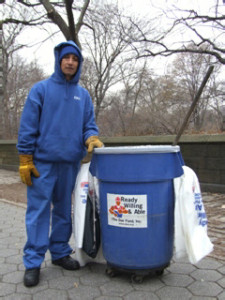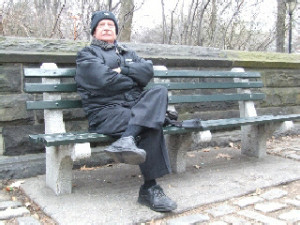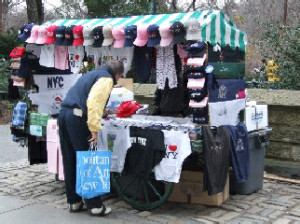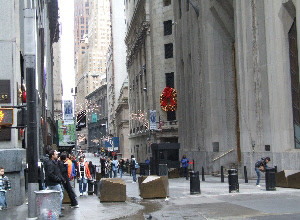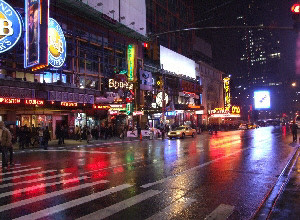When we left our 13-acre farmlet in New Zealand and went to a new life in England, we let our land to a local farmer, and the house and its 1/2-acre grounds to be tenanted. Before we departed, we wrote the following guide.
We call our farm Stanbridge Well because we dug a deep well near the entrance gate, and called the farm after that. This well has a 1950s wellhead operated by a 1/2-hp motor. The water is pumped into a pressure tank and from there pushed up the hill to a 500 gallon tank at the top of a hill behind the house from where the water is gravity-fed to the house and the rest of the farm. The water is perfectly clear, clean and without impurity. Good enough to be exported.
Stanbridge Well
Operating Manual 1999
Stanbridge Well Tenancy Agreement
- Unless you have our written consent:
- No removal or shifting of trees, shrubs or roses
- No renovations or alterations to house or buildings
- No pets or any animals except one cat
- Lease or use of the farm outside the area defined by the fence around the house and driveway is not part of this agreement
- Re-direct mail intended for the Tearles to: PO Box 137 Te Kuiti
- In May each year, please contact Robinson’s Water Services of Otorohanga to maintain the water pump. They will send us the bill.
- In June 2002 and again in 2004, please contact King Country Liquid Waste to service the septic tank. They will send us the bill.
- To avoid a chimney fire, in June each year, Kent fireplace in the family room must be serviced by a qualified fireplace servicing company.
- Keep house, buildings and grounds in neat and tidy condition
- Must allow lessee of farm prompt and reasonable access in order that s/he may carry out the normal business of farming the property. Includes use of water and access to all water and electrical services.
- The pool has a certificate of compliance with regard to the relevant swimming pool safety legislation (issued by Otorohanga District Council). The Tenant agrees to fully supervise the pool and bear all responsibility for behaviour of people around the pool and for pool maintenance (see separate section below). The landowners do not accept any responsibility for pool safety. This responsibility rests with the tenant. The tenant must keep the pool and surrounds maintained to the required pool safety standards adhered to by the landlord to achieve the certificate.
- All glass breakages and replacement are the responsibility of the tenant.
- Subletting of the property is not to occur.
- Must allow the landlord’s agent access to the house and grounds when given due notice.
Chattels Left in House
- Velvet drapes in 3 bedrooms, lounge, dining room
- Blue/pink multi-colour lined drapes in family room.
- Net curtains in all rooms including bathroom, toilet, ensuite
- Curtain rods, tracks and pull ties with all heavy drapes
- Fancy light fitting in all rooms except, bathroom, toilet, kitchen & lounge
- Cream wall to wall carpet throughout house
- Wall bookcase (family room)
- Dusky pink bathroom carpet in bathroom, toilet & ensuite
- 2 cream telephones
- 9 phone jackpoints
- Kitchen air extractor
- Window fans in bathroom & ensuite
- Kelvinator clothes drier & hose connection
- Fisher & Paykel dishwasher and stainless steel drip tray
- Kelvinator refrigerator
- Caprice wall oven
- Champion four ring cooktop
- Wall kitchen scales (in pantry)
- Tile Fire
- Electric hedge trimmer
- Sledge hammer
- Back pack spray unit
- 2 garage bench tables
- Concrete mixer & spare motor
- Pool vacuum hose & head
- Pool filter unit & motor
- Fish pond circulating motor
Electric fence unit
Any goods stored under the house and the pool deck belong to the landlord and must not be removed.
The Farmlet
This lease covers the land at the drive entrance, up the driveway and house section only. The farm itself is covered by separate lease to Jim & Dos Mark. They must be allowed access for their farming activities at all times, this includes access to water and electricity.
OPERATING MANUAL
The following sections are for your guidance. We realise that an executive country house with its own water supply and a pool is a little bit different from an average town house, so we have prepared this manual so that the most common questions may be answered quite simply.
Water supply
- The well. Any of the neighbours, or Jimmy Mark, can show you how to bleed the pressure tank, the following is the way I do it:
The water from our well is as nearly perfect as water can be. It is wonderfully clean, fresh and cold and comes from a depth of about 150ft. It is the same water that Puketawai Lodge is exporting and its supply has never failed us.
The well pump pressure tank needs bleeding about every quarter. The water from the well is forced up the hill into the large black water tank (reservoir) at the top of the hill, above the house, by pressure on a cushion of air in the tall blue pressure tank in the pump house. After a time, the air bubble becomes smaller because the air is absorbed into the water in the tank (as into a coke bottle). If the bubble becomes too small, the pump just keeps pumping because there’s not enough air pressure to force the close valve to shut off the pump, or for water to be pushed up the hill. It’s best to avoid the pump motor being thrashed like this because it may burn out. If you hear the pump just going and going, or stopping for only a minute or two and then restarting, but no-one is using the water, then bleed the pressure tank anyway. If the water has been used extensively eg to fill the pool or to water gardens over night then bleed the pressure tank. It doesn’t take very long.
Procedure:
- Open pump house door and turn off the power switch. Don’t forget that this also turns off the electric fences. It’s ok for a short length of time – say a couple of hours or so – but not longer. Leave the pump house door open until the entire process is finished and this will remind you that the electric fences are off.
- There are two valves on the outside of the pump house that you can see from the driveway. Turn off upper valve – parallel to the driveway is off. This stops water from up the hill backfilling into the pressure tank while you are trying to empty it.
- Stand to one side and open the lower valve. Water at considerable pressure will fire out onto the driveway. Wait a few minutes until the pressure has eased.
- Near the top of the pressure tank inside the pump house you’ll see the pressure gauge. At the bottom of this is a red valve. Turn this vertical and it will allow air to displace the outgoing water.
- Wait until the outgoing water stops completely.
- Turn on the pump for a minute and watch until the outgoing water runs clear.
- Turn the pump off, turn the outside lower valve off, turn the air valve below the pressure gauge to horizontal (off).
- Turn the pump ON.
- The pressure tank will now fill. It takes about half an hour. WAIT until the pump turns off by itself. The pressure tank will now be fully charged.
- Turn ON the outside upper valve. Water will now be flowing uphill to fill up the reservoir on top of the hill.
- Close and secure the pump house door.
We put the reservoir on top of the hill so we weren’t reliant on fickle power supplies for water. It holds about two days water supply at normal usage (showers, washing, dishes etc) so you have plenty of time if you need to turn the pump off for any reason.
- Reservoir
There is a ball valve in the reservoir that turns the incoming water supply to the reservoir on and off, like the ball valve in the paddock stock troughs.
There is an off/on valve near the ground on the incoming water conduit.
If you need to take off the lid to see, or work, inside the reservoir, it screws off. PLEASE REPLACE IT. Having the water in darkness is one of the best ways to keep it clean. Screw the lid only a bit over half way down – to allow the air to come and go as the water level in the reservoir rises and falls.
3. Control valves
There is an off/on valve where the water main to the house from the reservoir breaks through the retaining wall. By the robinia tree, behind the pool.
The house main breaks into two in a box in the rose garden below the toilet window. There are two valves there; one is cold water cut-off to the house and the other is hot water cut-off. If you need to work done on the hot water cylinder or to change tap washers (eg) these are the valves to use.
There is an on/off valve in the conduit from the reservoir main to the door in the south end of the pool deck. You’ll see a tap just inside the door. This tap, and the little valves with it, control the water supply to various garden sprinklers.
The Pool
The following is a guide to using the pool.
- General
When you turn the motor off, make sure it stays off for about 10 seconds before turning it back on. If you turn it off and on too quickly, or turn the filter valves too soon after turning off the motor, you’ll burn out the motor or blow out the impeller inside the motor. NEVER turn the filter valves while the motor is on. Whoever blows up the motor, replaces it.
It is the responsibility of the house occupants to keep the pool clean all year round, purchase pool supplies and to supervise children. We have built the pool and surrounds to Otorohanga District Council compliance requirements. It is the responsibility of the tenant to maintain safety standards for the pool at all times.
Check and clean the skimmer filter every week, all year round. It is in the bowl at the south end of the pool where the water flows out. An amazing amount of stuff gets into that filter.
You’ll see a brass bolt halfway up either side of the skimmer walls inside the pool. Keep the water level on or slightly above these bolts (ie halfway up the skimmer mouth). Don’t let the water level drift below half way. When there’s lots of rain filling up the pool, use the backwash cycle to lower the water level. The top water level needs to be kept below the top of the mouth of the skimmer otherwise surface debris won’t be able to be skimmed off.
The pool filter and pump on/off switch is behind the door that faces the house. There’s a timer. The instructions for setting the timer are printed on it. Leave the pool filter pump on its present timer settings (about six hours a day) and let it run every day.
Throughout the winter, a single cup of chlorine poured into the skimmer once a week will keep the pool clear and blue. In the summer, use a test kit and keep the pool to recommended safe levels of chlorine and associated pool chemicals.
Backwash the filter weekly in summer, monthly in winter. Vacuum clean the pool when necessary.
We get the chlorine, test kits and other supplies from Anchormart in Otorohanga, but it seems to be pretty much the same price wherever you try.
In summer, you’ll need to use the vacuum hose to clean the bottom of the pool
- Attach the hose to the vacuum brush, drop it into the water and push the free end of the hose into the hole in the skimmer lid. You’ll hear the filter fill with air.
- Turn off the pool motor and wait for the bubbling to subside.
- Turn on the motor and again you’ll hear the filter fill with air.
- Turn off the motor. Do this two or three times until the water runs continuously in the hose.
- Now you can vacuum the floor of the pool.
- If you see the water flow slow a lot, it means the filter is full. Backwash the filter and start again.
The pool filter (the fat black plastic drum)
You clean the pool filter by backwashing it – thus:
- Turn the motor off
- Turn the filter control valve to BACKWASH. Turn on the motor.
- If you go into the paddock outside the main bedroom, you’ll see lots of scummy water gushing out of a white pipe into the paddock. Wait until the water goes clean.
- Turn the motor off.
- Turn the filter control valve to RINSE. Turn on the motor for about 30 seconds. This cleans any dirty water out of the pipes.
- Turn the motor off.
- Turn the valve to FILTER and turn the motor on.
- Done.
Looking After the House
General: We have built a lovely executive home here in Lockwood timber and it has some very good quality surfaces. The following is a guide we use to keep the surfaces in good condition.
If something goes wrong and needs fixing, you have our permission to spend up to $100.00 on fixing it without having to contact us first, for instance blown wall fittings, stove elements and other simple things. We will accept the bill, or we will reimburse you, whichever is easiest. If it looks expensive, please contact us first.
- Kitchen
The kitchen is supplied with wall oven, dishwasher, hob and refrigerator.
It is the tenant’s responsibility to maintain these appliances in a clean & operational condition. Unexpected maintenance will be provided by the landlord. All care should be taken to keep the appliances in good and safe working order. Maintenance caused by ill treatment will be the responsibility of the tenant.
Hob Cooktop
Clean hob by wiping down after cooking while cook top is still warm. About once a week clean with Mica Ceramic Cooktop Cleaner.
Wall Oven
Wall oven – clean regularly with oven cleaner.
Bench Tops
Please do not chop onto benches or stainless steel bench top. Please use a chopping board. Clean regularly with Jif or Spray & Wipe.
Kitchen Units
Wipe down kitchen cupboards with warm water and detergent. Do not use chemical cleaners such as “Spray and Wipe”, they will ruin the timber.
Other Rooms
Windows
Clean regularly.
Carpets
These have been shampooed ready for your occupation. Tenants vacating the house shall have the carpets commercially cleaned by A1 Carpet Cleaners in Te Kuiti at the tenant’s own cost ready for the next tenant.
Please vacuum carpets regularly and clean away any spills immediately they occur. If in doubt about how to remove a stain, please ask an expert.
Carpets have been kept in good condition by leaving boots etc at the door. No dogs or other animals other than one cat shall be admitted into the house.
Bathrooms
Clean with disinfectant only (Pine O Clean works well). Do not use cleaners such as Spray & Wipe or Jif as these damage the surface of the vanity.
Clean shower and bath units with Spray & Wipe or Jif or like product.
Keep toilets clean and fresh.
We place Draino down the shower and bath plugs about every six months to keep drains clear. We also use a bottle brush.
Bathroom carpets are loose laid and can be washed, dried and relaid. If they need cleaning, wash with washing detergent then hose down on clothes line. Leave on line to dry.
Hearth
This is easily cleaned by wiping with Spray & Wipe.
Fireplace – Tile Fire
This is a wood burner only. Please do not use coal or any other fuel.
The Garden
The following is a guide to the care of the garden. If you want to see it looking its best, it is not too difficult to maintain.
- Lawns
Mow around the house section, under the birch trees at the entry to the house section, the shrubbery nob as required, down the drive and the road frontage at the letterbox. It usually takes me about an hour and a half. Spray weeds at edges, under trees etc with Roundup as required. Please take care with trees, shrubs etc.
2. Roses
Prune in June/July once the cold weather sets in. Early spring place rose fertiliser around each plant. If magamp is also placed at this time the roses give magnificent flowers. Refertilise December/January. Each rose garden has a watering system which can be used when gardens get dry. When in flower dead head roses about once a week. This keeps the plants flowering for as long as possible.
3. Weed all garden patches, including bark gardens. Most gardens are planted with plants that will come up out of the ground at various seasons. You are able to add additional flowers if you wish. Please do not remove miniature roses. They are memorial gifts to us.
4. Please take care not to damage specimen trees. Many of these are memorial trees (especially dogwood, robinia, camellias, silk trees and the ghinko.) It is vital that native bush area is retained. This provides much needed shelter to the property. Please do not cut down or cut back any trees without our written consent.
5. Shrubs may be lightly pruned as required.
6. Please spray metalled areas from time to time to keep free from weed growth.
The House Exterior
Spraying
We spray the following with Roundup about every six weeks or so depending on the season: It just helps to keep things tidy.
- Around the water pump shed
- Under the trees by the driveway
- Around garden edges
- At lawn edges at outside of section and driveway
- Up fencelines by the driveway from the gate to the house
- The rock garden around plants
- The house driveway
- Paths outside the family room
To date no other types of spray have been used on this property.
